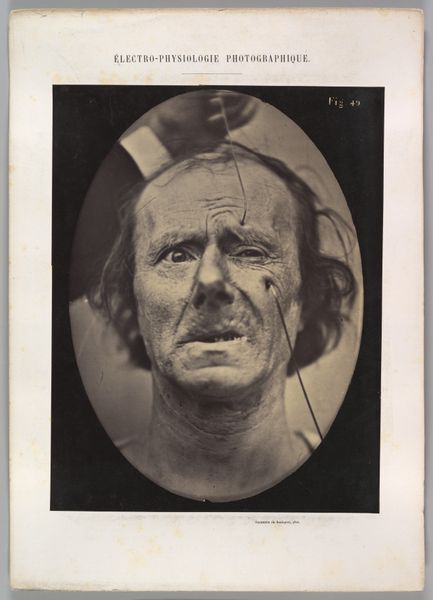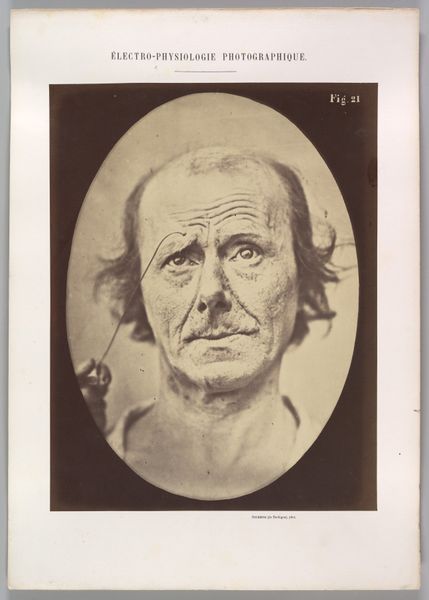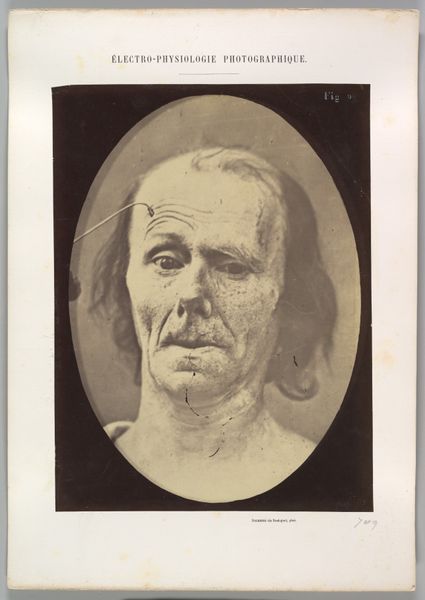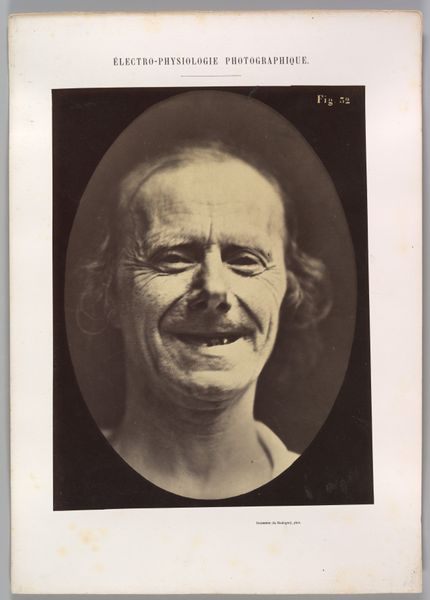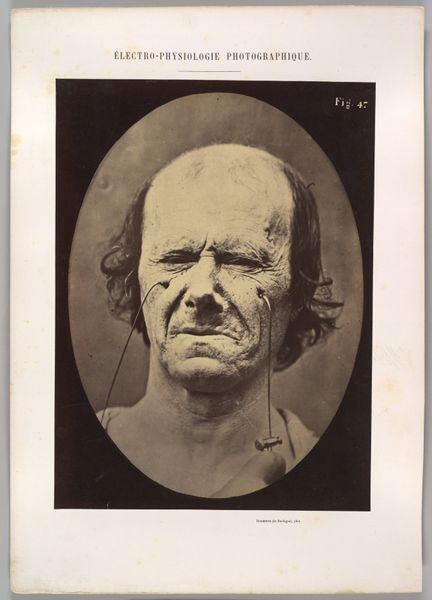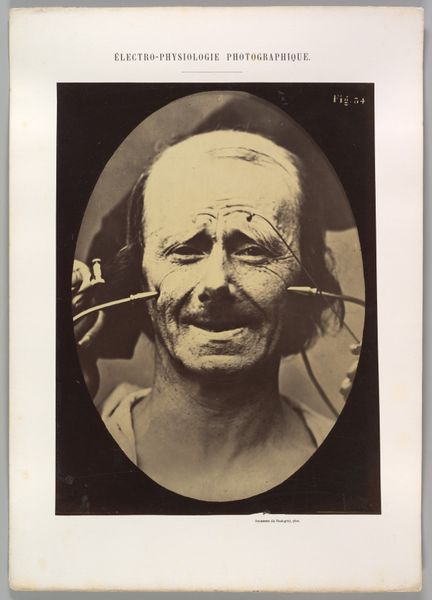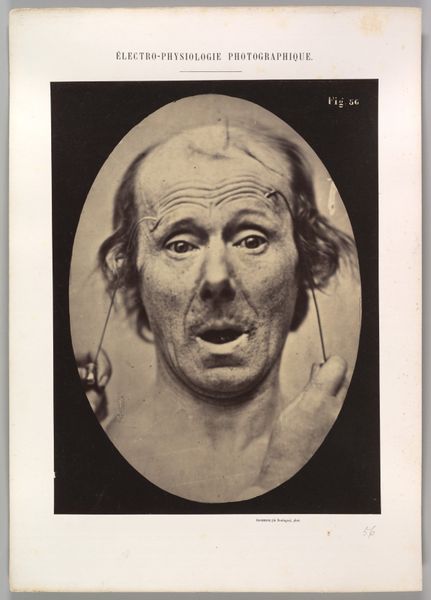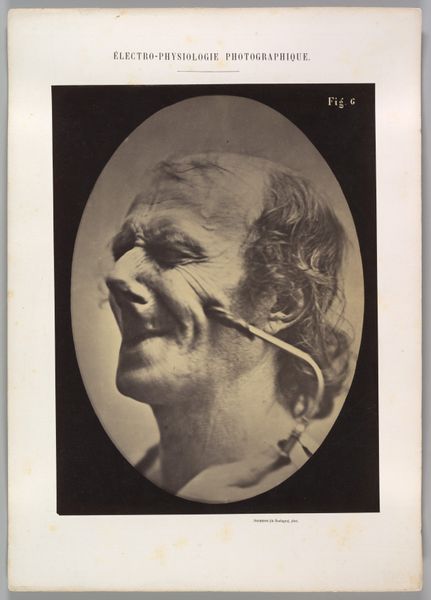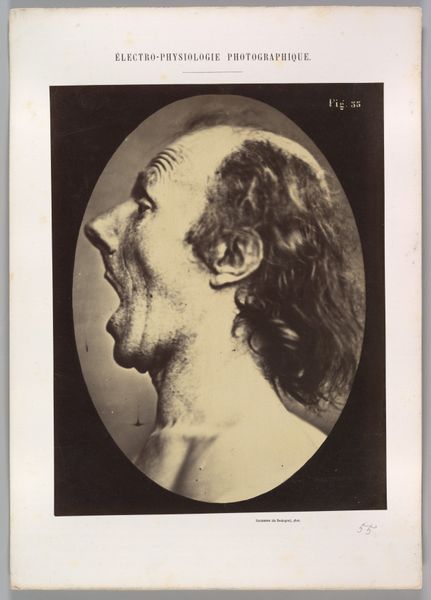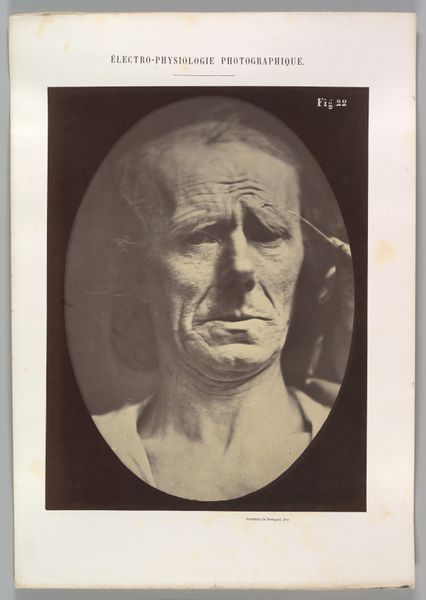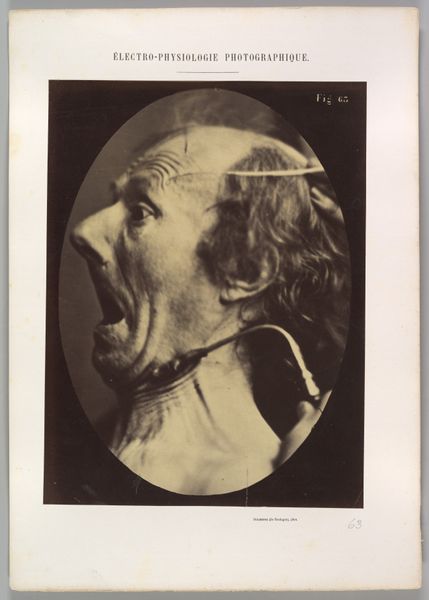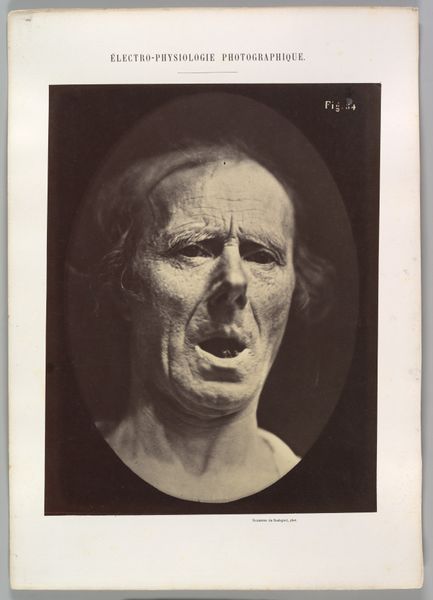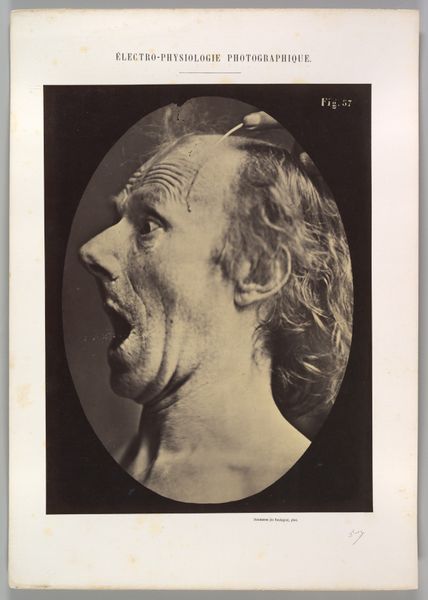
Figure 48: Mild weeping, pity and feeble false laughter 1854 - 1856
0:00
0:00
daguerreotype, photography
#
portrait
#
daguerreotype
#
photography
#
genre-painting
#
academic-art
#
realism
Dimensions: Image (Oval): 28.5 × 20.4 cm (11 1/4 × 8 1/16 in.) Sheet: 30.2 × 23.1 cm (11 7/8 × 9 1/8 in.) Mount: 40.2 × 28.5 cm (15 13/16 × 11 1/4 in.)
Copyright: Public Domain
Curator: This intriguing image, "Figure 48: Mild weeping, pity and feeble false laughter," is a daguerreotype made between 1854 and 1856 by Guillaume Benjamin Amand Duchenne. It's currently held at the Metropolitan Museum of Art. What are your initial impressions? Editor: My first reaction is profound discomfort. There’s something deeply unsettling about the subject’s expression. It feels... forced, unnatural, like a performance of emotions that don’t quite ring true. Curator: Indeed. Duchenne, you see, was deeply invested in the science of physiognomy, exploring the physiological basis of emotions. Look at the framing—the composition emphasizes the lines, the contours of the face itself. And then notice the precise tonal shifts of the grayscale, enhancing the detailed study of the facial muscles. Editor: Precisely, it is hard not to observe the subject's expression with some sort of anxiety. Considering the time it was made, this piece makes me question Duchenne’s subject; there is something about the subject's teeth, expression and electrode wiring, for the camera and for science, that brings the social issue of coercion into play, given scientific racialist views in the mid-19th century. How voluntary was this display of supposed emotions? Curator: An important question! Duchenne sought to scientifically document emotions through precise muscular contractions, using electrical stimulation. This method raises complex ethical considerations. This is where his scientific intentions brush with artistic interpretation. His aim was purely objective data; yet, the result is inherently expressive. It is also where the study itself can be criticized. The photograph claims to objectively portray feelings but may be a representation, not the experience of them. Editor: Absolutely. This photo captures both the supposed 'objective' science and raises many of the subjective quandaries of how power and science operate, how subjects can be 'objects', and whether emotions can ever be captured in totality. Curator: It also highlights the era's fascination with pseudo-sciences. Duchenne applied a systematic approach that suggests objective analysis of something inherently subjective – human emotions, inviting both careful study and reflection. Editor: In a way, this image challenges us to reflect on the limitations of capturing humanity through a lens. Its rigid form gives it a modern resonance—forcing us to interrogate not just emotion, but our methods and their power too.
Comments
No comments
Be the first to comment and join the conversation on the ultimate creative platform.
